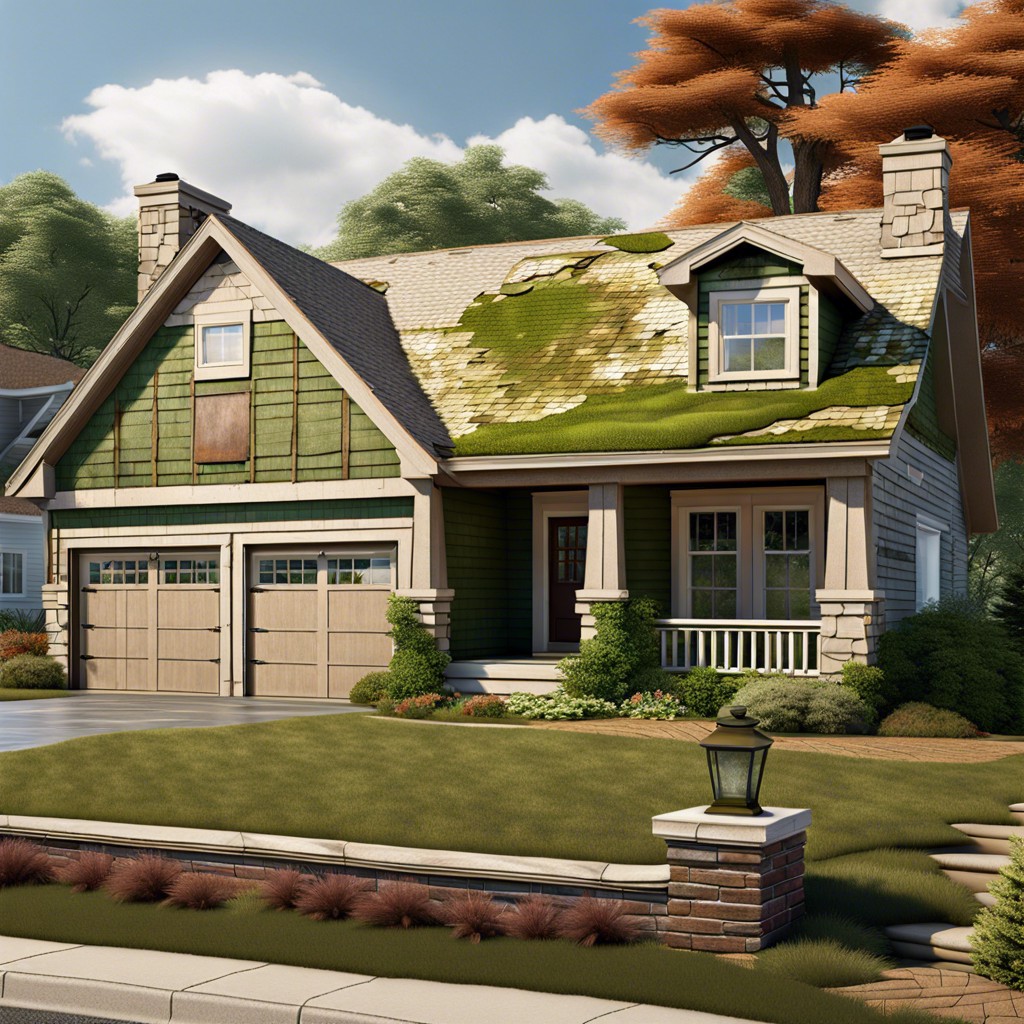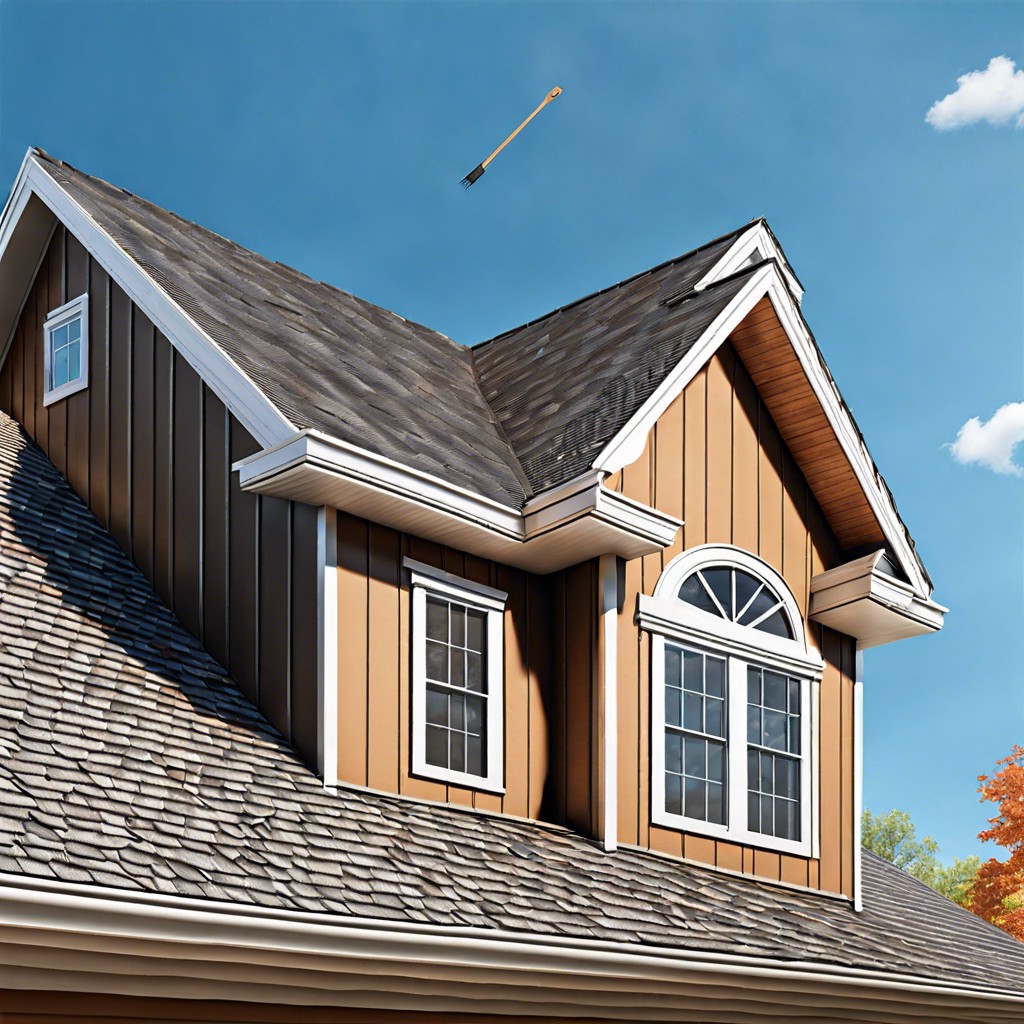Last updated on
Learn how to spot the warning signs that indicate your roof may require replacement.
Key takeaways:
- Roof age surpasses 20 years
- Shingle edges are curling
- Shingles are cracked or absent
- Sagging roof structure
- Signs of water damage
Roof Age Surpasses 20 Years

If you’ve celebrated a couple of decades with your roof, give yourself a pat on the back, then peek up at the old guard. Most shingles are built for the long haul, but a 20-year stint is a telltale sign that they may be nearing the end of their duty. With the passage of time, even the most stalwart materials bow to the whims of Mother Nature. Think of it like hitting a milestone birthday; certain things just don’t work like they used to.
Wear and tear is a natural part of a roof’s life cycle, especially after sheltering you from the elements year in, year out. Weather-worn shingles may start to lose their battle against the rain, wind, and sun, leading to potential armor chinks that could invite leaks. Keep an eye out for color inconsistencies or areas where the granules have packed their bags and left the shingle bare—these are dead giveaways that the rooftop bash celebrating a resilient two-decade run might be your queue to scout for a replacement.
Shingle Edges Are Curling
Curling shingles are like a red flag on a breezy day: hard to miss and signalling trouble ahead. This phenomenon, often manifesting at the edges, could be an invitation for leaks. It happens due to weather-induced wear, like excessive heat or moisture that warps the material. Beneath the surface, loss of the granules that coat and protect your shingles could also be the culprit.
You may spot two types of curling: clawing, where edges stay flat but the middle rises, or cupping, where the edges turn upward. Both suggest your roof could play host to unwanted elements, making an unwelcome puddle on your living room floor a real possibility.
When shingles resemble a misshapen hat more than a sturdy barrier, it’s time to consider inviting professionals for a closer look. They’re best positioned to tell you whether you can get by with repairs or if you’re due for a new roof over your head.
Shingles Are Cracked or Absent
Asphalt shingles are like the armor of your roof, designed to shield it from sun, wind, and rain. When this armor cracks or goes missing, it’s a red flag. Sun exposure and weather extremities over time can cause shingles to deteriorate, leaving them brittle and easy to break. It’s like getting a sunburn that never heals; once the damage is done, there’s no going back.
Imagine missing shingles as missing teeth in a comb. They leave your roof vulnerable to the elements, a literal gap in your home’s defenses. When shingles fall off or break, it’s a clear sign your roof needs attention, and pronto. Spotting granules from the shingles in your gutters? That’s like finding breadcrumbs on a trail—they lead to the inevitable conclusion that your shingles are breaking down.
Cracked shingles are also troublemakers. They hint at a roof’s fatigue, succumbing to the relentless cycle of freezing and thawing, or maybe just one too many hailstorms. It’s akin to having a windbreaker with tears during a storm; those rips are bound to let the water through.
In a nutshell, don’t turn a blind eye to cracked or AWOL shingles. They’re more than minor blemishes; they’re SOS signals from your rooftop.
Sagging Roof Structure
A sagging roof is a telltale sign that your home’s rooftop may be waving a white flag. Think of it as the roof crying uncle due to years of bearing the brunt of mother nature’s whims. This troubling dip or swoop in the structure doesn’t just happen overnight.
Sagging often stems from long-term, undetected water damage that weakens structural supports. Alternatively, it could be a case of too much weight from layers of shingles or heavy snowfall that never got the boot. It might also scream poor initial installation or lack of proper attic ventilation; both can set up a roof for a downward spiral.
Spotting the issue can be as simple as taking a few steps back for the full picture. If the center is starting to resemble a saddle more than a sturdy shield, it’s time to call in the pros. Left unchecked, a sagging roof risks evolving into collapses—now that’s a rain check you don’t want to cash!
Signs of Water Damage
Water stains on the ceiling may paint a picture of an old world map, but don’t let nostalgia take over; these marks often signal leaks. Peeling paint and discoloration on walls also hint at moisture issues stemming from above. Don’t merely gaze upwards inside; attic checks are crucial. Mold or a musty odor in the attic can indicate water taking up unwelcome residence. If daylight peeks through roof boards, it’s more than ambiance—it suggests shingles are missing their dance with the rafters. Feeling drops while indoors? Take action. Leaks don’t send RSVPs; they just crash your home, uninvited, and they’re clingy guests.




